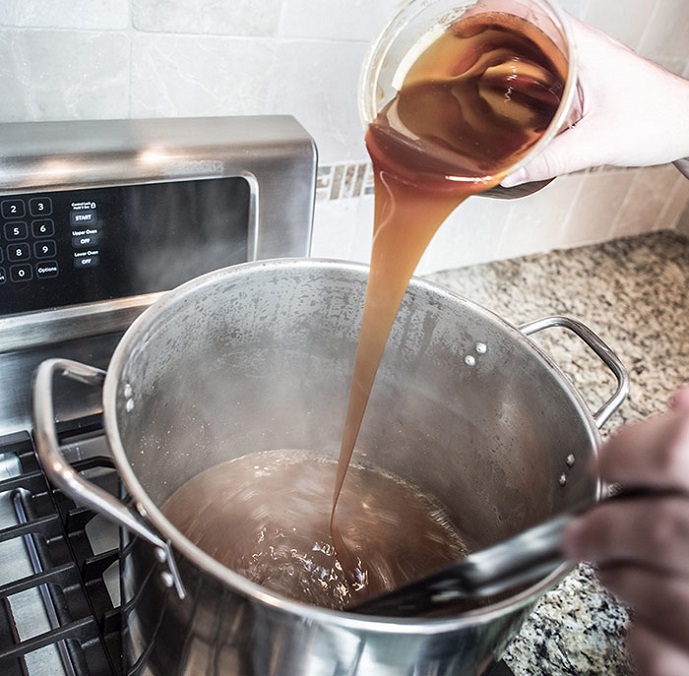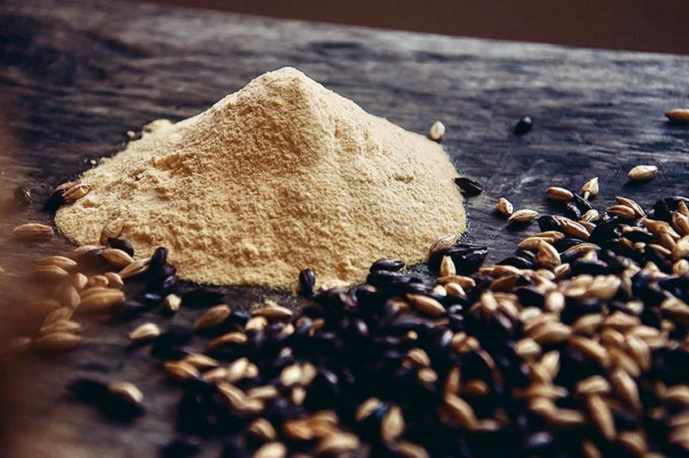Homebrewing is a social and fun activity with a beautiful purpose – creating your own beer in your favoured craft beer style. You can explore various craft styles, flavours and techniques and use the ingredients you prefer to brew tasty beers that your friends and family will love, maybe even those who prefer wine over beer. However, the fun part is mostly about experimenting and learning throughout the process. You may be surprised how many things there are about your favourite beverage that you didn’t know.

Source: homebrewersassociation.org
Wine is made with grapes, cider with apples and beer with malted grains. Without malts, there is no beer. Most homebrewers don’t malt their own grains, but simply use malt extract, a more highly processed form of malt. In extract brewing, the homebrewer uses ready-made extracts and skips the sugar extraction process as it has been done already. Depending on your brewing method and recipe, you can choose liquid malt extract or dry malt extract and here are the main differences between the two and all you need to know about them.
Liquid vs. Dry Malt Extract
Using malt extract is a convenient way of making quality beer and is a good starting point for most new homebrewers as the process requires minimal homebrew equipment and procedures. Whether you’re new to homebrewing or you have more than a hundred batches under your belt, malt extracts are the key to producing amazing beers. The quality of extracts has improved over time and can be depended on for getting consistent results.
What Is Liquid Malt Extract?
The best thing about this type of extract is the convenience it provides. And that’s one of the main reasons why many homebrewers choose liquid malt extract for their recipes. It offers a slightly wider range of flavours. Some liquid malt extracts are hopped, so if you’re going for a hopped malt, there’s no other choice but to get LME.

Source: muntons.com
Malts can affect the beer colour, so a beer made with lightly toasted malts will be pale in colour, while a beer made with more darkly roasted malts will be darker in colour. In general, bulk LME can produce beer that is darker and may retain a sweet caramel flavour, which may be desirable depending on the style of beer you’re making.
Liquid malt extracts are made by conducting a typical mash and then dehydrating the wort down to about 20 per cent water. What’s left is a molasses-like syrup. If the recipe requires large amounts of malt extract, LME might be your best choice. It may seem difficult to get all the LME into the boil, but swishing around some hot water in the container can help get all the sugary-goodness.
Liquid malt extracts have a shelf life of up to 2 years if kept in a cool, dark and dry environment, after which point it’s most likely to start degrading. If stored improperly, the colour of the liquid malt extracts can become much darker over long periods.
The main difference between liquid and dry malt extract is the amount of water in each. Since the two types of malt are different in water content, they differ in sugar content as well. Therefore, liquid and dry extract are not interchangeable in a recipe, but you can use a simple formula for determining the conversion from one to the other.
The ratio for use between the liquid and dry form of malt extract can be approximated as the following – 1 pound of liquid malt extract would roughly equal 0.8 pounds of dry malt extract, while 1 pound of dry malt extract would roughly equal 1.2 pounds of syrup malt extract.

Source: homebrewersassociation.org
What Is Dry Malt Extract?
Dry malt extract is created the same way as LME except that it goes through an additional dehydration step, which reduces the water content down to about two per cent. Due to the lower water content, dry malt extract can have a better life shelf with less risk of darkening issues. But keep in mind that if once exposed to air, it will take on moisture, which can cause it to clump and become difficult to work with.

Source: barmalt.com
DME comes in powder form, which allows for easier weighing compared to LME when you’re not using an entire package. Just keep in mind when you’re done to squeeze out as much of the air as possible from the package, then seal it and store it in a dark and cool area.
The bottom line is that each form of malt extract has its advantages and disadvantages. You may find which one’s better suited for your brewing experience based on your brewing process and goals. Also, it may depend greatly on the recipe you’re using. The main thing to remember is that you can create an excellent beer with extract as long as the extract is fresh and properly stored.
Other Ingredients
In its essence, beer is a simple product, which may be one of the reasons why so many people love it. It’s water with malt added to it, which gives the sugar that the yeast feeds off and creates alcohol and carbon dioxide and hops are used to give some additional flavour. So, there are four base ingredients – water, malt, yeast and hops. It’s the specific kind and amount of each one of them and how you mix them, that gives all the beautiful beers we like to enjoy alone or in a good company.






















